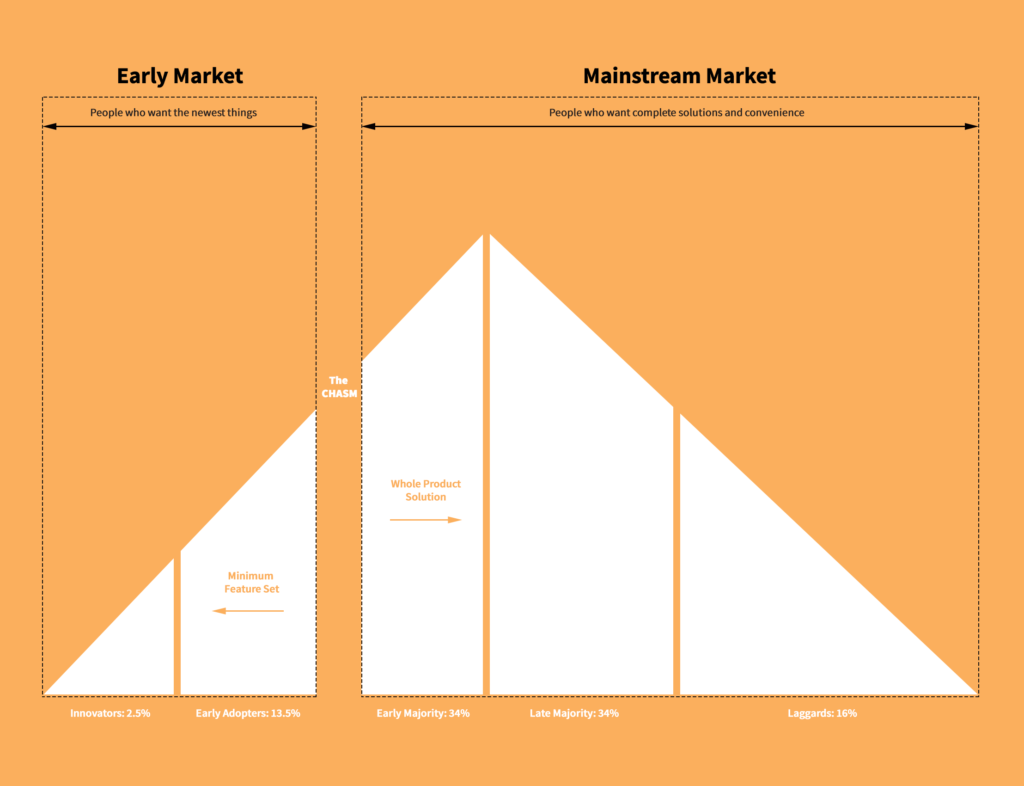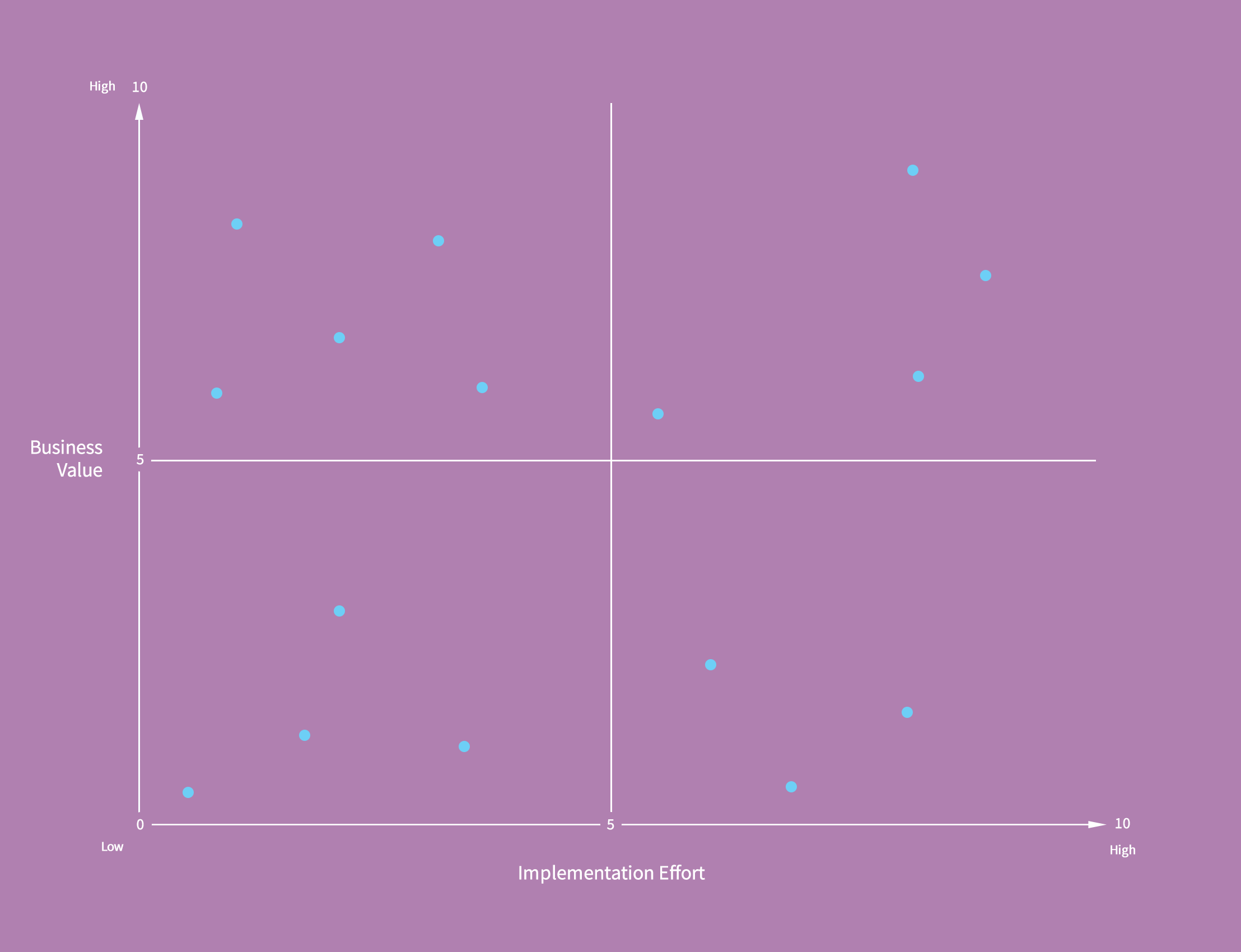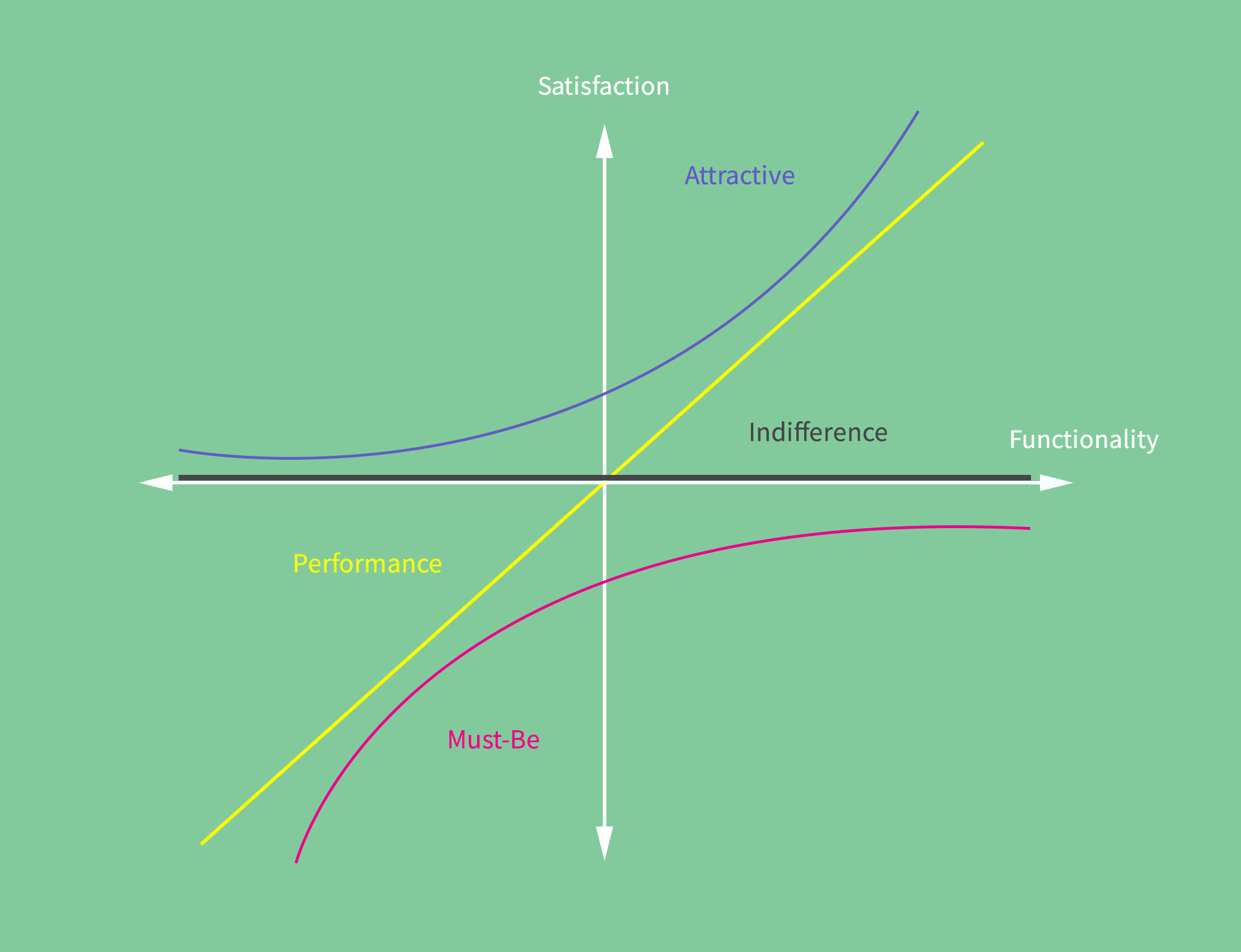
Why Minimum Viable Products Are the Key to Realizing Your Product Vision
- Product Management /
- Product Strategy /
Today business leaders across every industry are taking a step back and revisiting everything they do, from internal systems to customer interactions both online and in person. Teams are tasked with creating and delivering digital transformation solutions that empower employees, engaging customers, optimizing operations, and transforming products and services.
While the ask in many cases is simple, delivering a successful digital product internally or to market is an entirely different story. You need a way to quickly test your ideas, validate them and ensure the intended impact. This is where a minimum viable product (MVP) comes in.
MVP (Minimum Viable Product) is a term that is thrown around a lot these days, but is a widely misunderstood concept with a plethora of different definitions that range from the smallest possible experiment to test a specific hypothesis, to the tangible realization of a product vision.
At Emerge we define MVP as the best solution that meets the needs of the target audience, with the least amount of risk, while conforming to all the known constraints. It’s the first step towards achieving your long-term digital product vision. This thinking is based upon decades of experience and influenced by industry thought leaders like Marty Cagan and Eric Ries:
Marty Cagan defines MVP as the smallest possible product that has three critical characteristics: people choose to use it or buy it; people can figure out how to use it; we can deliver it when we need it with the resources available. This is also known as valuable, usable, feasible, and viable.
Eric Ries in his book Lean Startup defines MVP as that version of a new product which allows a team to collect the maximum amount of validated learning about customers with the least effort.
Many organizations use the term MVP to mean the lowest cost option of delivering the product, or a reduced feature set with less functionality, or version one of a complete product or service solution. With so many different interpretations, your team, like many teams, may find themselves challenged to manage expectations, scope, and resources effectively.
The first step towards a successful MVP is aligning on the definition and your intention.
What is a Minimal Viable Product (MVP)?
One of the best ways to understand MVP is to see the concept visualized. The following image illustrates agile and lean product development:
The illustration captures the essence of iterative and incremental product development using the metaphor of a car. Taken out of context however, some significant assumptions may be made that could steer you down the wrong path. It is also imperative not to be fooled into thinking that “minimum” means “easy”. Determining a minimum viable product’s top priorities, identifying the core feature set, and asking the right questions along the way is an important part of the process. Let’s breakdown what each part of this illustration represents.
- The top row illustrates a common misconception about iterative and incremental product development, that is often the reason so many projects fail. It focuses on the components in an incremental way instead of the problem to be solved (a.k.a job to be done). Let’s look at this from the user’s point of view. If you deliver a wheel to the end user does it address their need or problem? Is it a valuable, usable, and feasible solution? What insights or feedback could the user provide that would help inform the development of a better product? With each iteration, you are getting closer to delivering a solution, but still addressing the end user’s need, or problem. This approach is another way of looking at delivery of a complete product. It’s not until the fourth incremental delivery that a solution is viable to the user. This approach, while agile, doesn’t allow for the opportunity of user feedback to refine the solution. This opens your product up to risks like user (market) adoption challenges, design, and technical debt, to name a few.
- The middle row illustrates another common misconception about iterative and incremental product development when it comes to defining and having the development team successfully build an MVP product. In this example, we start with the same contextual metaphor of a user who needs a car. In this scenario, the focus is on the problem, getting someone from point A to B as quickly as possible. Each iteration (1-4) highlights a possible solution. This approach allows you to validate, and invalidate your hypotheses, to define the solution space, to quickly develop proof of concepts and prototypes.
To be clear, a Proof of Concept (POC) is the pilot project or experiment, which demonstrates an idea, product, service, process, design concept, or integration point (i.e. software to hardware) to ascertain its feasibility. It does not, however, directly address whether this thing is valuable or usable for a user.
A prototype is an early interaction, model, or release of a product built to test a concept or process. There are many methods of prototyping and when and how it can be applied to the product development lifecycle. A prototype may be used to determine if a product is valuable, usable, and feasible early in the process depending on the approach and the stage of the product development lifecycle.
Let’s look at this approach of the middle row from the user’s point of view. If you deliver a scooter to the end user, does it address their need or problem? No. Is it a valuable, usable, and feasible solution? No. So did we solve the right problem for the user? Is each iteration an evolution of the product or a different product altogether? While this approach allows for user testing, feedback, and refinement of the solution, it doesn’t address the fact that our user needs a car. Although a valuable approach to define the appropriate solution space for the focus of your product team, this does not deliver on the intention of an MVP.
- The last row illustrates the approach to MVP (minimum viable product). Continuing to use the car metaphor, each iteration is a refinement to the solution that meets the needs of our prospective user. From the first iteration, a user is presented with a solution that meets their needs, providing a minimum viable product that is valuable, usable, and feasible. It is anchored to a strategy and business model, not just an idea aligned to solving the problem, but producing the desired outcome for the user that can be iterated and improved upon. Typically, the MVP is targeted to provide sufficient functionality and value to appeal to early adopters, enabling further iteration, and eventually scaling up of the product or service to the majority of the market.

Benefits of the MVP approach
The three most significant reasons new products and business’s fail are the lack of a market fit, running out of cash, or having the wrong team. At Emerge this amplifies the importance of implementing the right MVP approach, and maximizing the viability of your investment. Taking the right MVP approach was crucial to the success for one of Emerge’s recent clients: The initial digital product we helped to create quickly validated the investment and unlocked millions in previously untapped revenue.
If those aren’t compelling enough reasons or example, let’s explore five of the benefits in more detail. A minimum viable product can provide:
- Insights – Gather preliminary insights to validate if your product is successfully addressing a need or solving a customer problem. This also provides invaluable insights early in the process that can enable you to proactively pivot, dramatically shift focus, or even move on from the product while the investment is within an acceptable risk level.
- Value Proposition – Bring focus to defining the product’s core value proposition and differentiates it from alternative solutions available to the customer. By focusing on MVP, you are required to clarify the value you are building, and ensuring it aligns with your larger strategic vision.
- Co-Creation – Involves customers as quickly as possible in the early stages of the process. It informs the prioritization of features and functionality on the product roadmap. Co-Creation facilitates focus on continuous improvement of your product and building stronger relationships with early adopters, the refinement of your value proposition, and helps to inform decision making.
- Rework – Significantly reduce potential rework, or abandoning features that go unused by quickly validating the product experience, value delivery, and market fit. Great research, user experience design, engineering, and testing can’t replace feedback of a product in the market from your users.
- Speed to Market – Increase the velocity at which you can deliver value. Taking an iterative approach to product development lifecycle enables product evolution, focusing on essential elements of your product or service. It also allows you to refine the business functions that are essential to supporting the success of the product and unnecessary costs.
Tips for Defining Your Digital Product MVP
- Defining the minimum viable product of your digital product or service starts by aligning everyone on your team. This includes the top of the organization to everyone working on the product or service. It informs both internal and external team members on the why behind the product, the intended outcome of your MVP, and the known constraints (i.e. customer insight, time, money, capabilities, etc.). It is imperative to have this shared understanding from the beginning. With this understanding, information, and thorough product discovery process you will be able to identify the right approach to your MVP.
- A successful minimum viable product doesn’t always equal product market fit. When developing an MVP, you are targeting early adopters and it’s rare to get it all correct the first time out of the gate. It promotes validation and refinement of the fit. As you set your goals, confirm that you are clear about this, as it will help to manage expectations.
- Don’t prioritize in silos. Each key discipline has an important point of view in the prioritization process. From product management, to design and engineering. All respective disciplines bring a different point of view and a different skill set that will inform the success of your MVP.
Five of the Most Common Mistakes When Defining Your Digital Product MVP
- Inadequate product strategy. If you haven’t completed a thorough product discovery process, stop. This is one of the most common mistakes made where a business wants to jump right into building an MVP. A proper MVP is anchored to a clear product vision and grounded in understanding the problem you’re solving and its impact on your target audience. It’s the key difference between great products vs average products.
- Feature overload. Over-engineering your MVP and adding too many features defeats the whole purpose of the MVP. Your product will become muddled and the process will become counterproductive. Focus on the core features that are necessary to create the value for your audience, maximizing your opportunity to stand out and establish market fit. In most cases less is more.
- Trying to appeal to everyone. You have identified a problem worth solving and have an idea on how to solve it in a unique and valuable way. Don’t lose sight of your core audience needs or let business objectives overshadow the product intent. It’s an easy trap to fall into! There is no such thing as a one-size-fits-all product.
- Perfection is the enemy of progress. Your MVP is just the first iteration of your product. It’s not going to be perfect. Don’t skip steps like prototyping trying to get to that perfect product. Every iteration is about learning and unchecked assumptions have a way of biting you in the end. Each iteration is key for investors, team members, or potential customers.
- No feedback system in place. The effort of delivering the MVP of a product can be wasted if you don’t have any visibility into how your product is used. It’s important to make sure that any MVP has a feedback system in place to gather ongoing actionable insights from customers to guide each iteration of the product. Does the product deliver on its promise? What is working? What is not working?
Methods for Prioritization
There are many common practices that can be used to prioritize the features and functionality of your MVP. Regardless of the chosen approach, it is critical that the team not lose sight of your goal, the problem, the opportunity you’re addressing, the context of the user, and the intended outcomes. Here are three popular methods summarized:
- Priority Matrix: At Emerge we often use a prioritization matrix with small to mid-sized projects where we can relatively easily divide features into two oppositions: ‘important – unimportant’ and ‘simple – complex’. Each feature is plotted against two axes = ‘business value’ on a scale of 1 thru 10 and the estimated ‘level of effort’ on a scale of 1 thru 10. There are two important distinctions that should be noted: First, when we talk about ‘business value’ we’re talking about addressing a need of a user that if satisfied will increase revenue, provide a cost reduction, and will provide a cumulative benefit, or mitigate risk. Second, when we talk about ‘level of effort’ we’re talking about the time, financial investment, effort, risk, and complexity of delivering the need of the user. Here’s an example of what that can look like:

For mid to large-sized projects you will have to have a clear picture of the independencies of each feature, which is necessary when ensuring that you can fulfill user stories and target outcomes. This method, in combination with the Opportunities Solution Tree, can be exceptionally effective. - MoSCoW Analysis (a.k.a The Bucket Method): Another method we use frequently at Emerge is MoSCoW. The term is an abbreviation for the prioritization of features into four buckets categorized as: ‘must-haves’, ‘should-haves’, ‘could-haves’, and ‘won’t-haves.’ The MoSCoW method is a technique used in business analysis, project management, and software development to reach a common understanding with everyone involved. It clarifies the importance they place on the delivery of each requirement. Based on its simplicity, MoSCoW has become a popular method to employ.
Successful implementation of this technique is contingent on the clear and firm distinction of the four categories, and alignment on the importance of each feature through the iteration and refinement of your product roadmap. To avoid some common pitfalls of this method, you must have a shared understanding of the rationale for ranking priorities, and the method for reconciling competing priorities. It is crucial that features requiring continuous improvement are always taken into consideration in this process.
Must-haves are critical to delivering a successful minimum viable product. Project delivery should be considered a failure if even one “Must-have” is absent. Without this feature the user can not achieve the intended outcome and its intended business value. For larger projects, MUST can also be considered an acronym for the Minimum Usable Subset.
Should-haves are important but not necessary for successful delivery of your MVP. While Should-have requirements can be as important as Must-have, they are not vital.
Could-haves are desirable but not necessary and could improve user experience or customer satisfaction with a low level of effort. These items tend to have minimal impact if left out of the product. These will typically be included if time and resources permit.
Won’t have (this time) are agreed upon as the least-critical, lowest-payback items, or not appropriate for MVP. These features are still important to document for the team’s proper expectations and understanding as they may be reintroduced later. - The Kano Model: This alternative method worth considering is a powerful approach to prioritizing your minimum viable product, evaluating your features based upon the satisfaction and sentiment of your target customers. Professor Noriaki Kano first introduced the Kano Model in the 1980s, focusing on product development and customer satisfaction.

The approach classifies customer preferences into five categories based upon the response to two questions. How does the user feel if the feature is present? And how does the user feel if the feature is not present? The approach promotes an understanding of the customers’ point of view in relation to a product’s features. The responses to these two measures will fall into one of five categories: Attractive, Performance, Indifferent, Must-Be, and Undesired.
If you are going to consider using this approach, I highly recommend you also read Daniel Zacarias explanation of the Kano Model as well as how to implement and fully utilize it. He provides an insightful overview and deconstructs the methodology and application of this approach step-by-step.
Rock Your Digital Minimum Viable Product
Establishing a shared understanding of MPV and the right approach enables you to prioritize the right things. You can proceed to maximize the benefits of your minimum viable product approach at each iteration. With focus, it is possible to more effectively navigate the entire product development lifecycle and make more informed decisions.
Each prioritization approach has its place and can prove to be immensely beneficial. But, there are no shortcuts when it comes to prioritizing the right things. The process of gathering continuous feedback and refining your product or service is the core product management. This practice is not only about creating something customers need or even love. It is a business practice that delivers outstanding solutions.